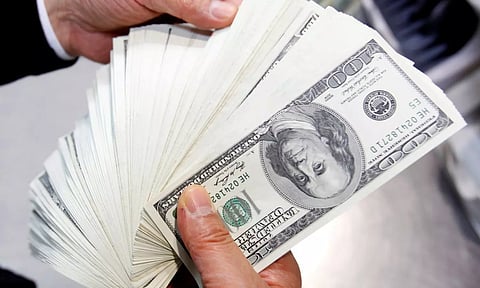

LONDON: The dollar steadied on Wednesday in the wake of more strong U.S. economic data, nudging the Japanese yen closer to a test of levels that drew official market intervention back in 2022.
The yen traded at 151.52 per dollar early in the Asia session, within a whisker of 151.94 where Japanese authorities stepped in during October 2022 to buy the currency. For the quarter ending later this week the yen is the worst-performing major, down more than 7% on the dollar even after Japan's exit last week from negative interest rates.
Officials have been making near daily warnings against speculative moves and markets are jittery about a test of 152 per dollar as Finance Minister Shunichi Suzuki said Japan won't rule out any steps if it thinks the yen is falling too fast. "The (Bank of Japan) hike was seen as a non-event but it ended eight years of negative rates and unorthodox policy and with it also their forward guidance," said Bob Savage, BNY Mellon's head of markets strategy.
"The risk of a more hawkish BOJ and more yen focus from the BOJ and (finance ministry) remain in play." BOJ board member Naoki Tamura will make a speech and hold a news conference during the Asia session on Wednesday.
China set a firm onshore fixing for the yuan, as it leans against market selling pressure that sent the currency down sharply to a four-month low on Friday. It was steady at 7.25 per dollar in offshore trade on Tuesday. Australian data published in the morning showed inflation holding at a two-year low of 3.4% in February, reinforcing market wagers that the next move in interest rates would be down. The Aussie slipped 0.1% to $0.6525.
It is down 4.3% for the quarter. Other morning moves in Asia were marginal with markets waiting for Friday's release of U.S. core inflation data. Overnight data showed a bigger-than-expected jump in U.S. durable goods orders in February. While that only partly made up for a large drop in January and came with sub-par consumer confidence data, it pushed the dollar up a little bit.
The euro, at $1.0829 is more or less in the middle of a range it has kept for a year and is down 1.9% for a quarter where expectations for U.S. rate cuts have been scaled back. The Swiss franc, still reeling from a surprise rate cut in Switzerland last week, fell about 0.5% on the dollar to a four-month low of 0.9042 overnight.
It is down about 7% for the first quarter of the year. The U.S. dollar index is up 2.9% for the quarter to 104.31. Sterling was steady at $1.2621 and was broadly steady for the quarter, too, down just 0.8%.
On Tuesday Bank of England policymaker Catherine Mann said she changed her mind to vote for a rate hold last week, instead of a hike, due to consumers turning more stingy. But she still believes financial markets have too many cuts priced in. Rate cut expectations have weighed the New Zealand dollar , which was clinging on to $0.60 in Asia trade having fallen 5% against the dollar through the quarter.
New Zealand's Treasury revised its economic growth forecasts lower on Tuesday. "U.S dollar momentum is positive, and recent NZ data has been weak," noted analysts at Westpac who recommend a short kiwi position.